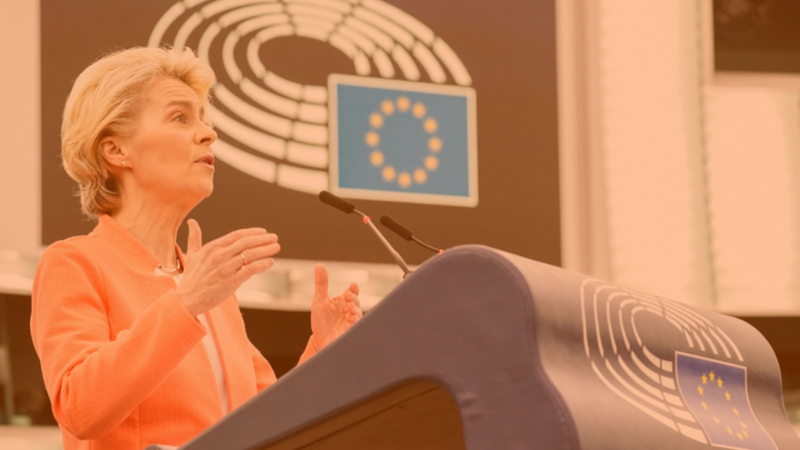The EU’s power sector is a good example of what market fundamentalism has done to electricity networks the world over. With the end of cheap natural gas, retail consumers and businesses are paying the price for their governments’ embrace of a shoddy theory.
The blades of the wind generators on the mountain range opposite my window are turning especially energetically today. Last night’s storm has abated but high winds continue, contributing extra kilowatts into the electricity grid at precisely zero additional cost (or marginal cost, in the language of the economists). And yet, the people out there, who are struggling to make ends meet during a hideous cost-of-living crisis, have to pay for these kilowatts as if they were produced by the most expensive liquified natural gas transported to Greece’s shores all the way from Texas. This absurdity, which applies well beyond Greece and Europe, must end.
The absurdity stems from the delusion that states can simulate a competitive, and thus efficient, electricity market. They can’t. Given that only one electricity cable enters our home or business, leaving matters to the market would lead to a perfect monopoly that nobody wants. Enter governments intent on simulating a competitive market with which to replace the public utilities that used to generate and distribute.
The European Union’s electricity market is a good example of what market fundamentalism has done to electricity networks the world over. The EU’s member-states were, first, obliged to split the electricity grid from the power generating stations. Then, they had to privatise the different power stations to create new firms which, in competition with one another, would provide electricity to a new company owning the grid which would, in turn, lease its cables to another host of companies that would buy the electricity wholesale and compete among themselves for the retail business of homes and firms. Competition between producers was to keep the wholesale price to a minimum while competition between retailers would pass this low price on to final consumers and provide them with high-quality retail services. Alas, none of this could be made to work in theory, let alone in practice.
The simulated market faced two problems: The political imperative to ensure a minimum amount of electricity within the grid at every point in time. And the importance of channelling investments into green energy. The solution proposed by market fundamentalists was twofold: Create another market for permissions to emit greenhouse gasses. And introduce marginal cost pricing; i.e., the rule that the wholesale price of every kilowatt should equal that of the costliest kilowatt.
The emission permits’ market was meant to motivate electricity producers to shift to less polluting fuels. Unlike a fixed carbon tax, the cost of emitting a ton of carbon dioxide would be variable and market-determined. In theory, the more the industry used terrible fuels like lignite, the larger the demand for the EU issued emission permits, the higher their price, and the greater the incentive to switch to natural gas and, ultimately, to renewables.
Marginal cost pricing was intended to ensure the minimum level of electricity supply, by preventing low-cost producers to undercut higher cost ones, at prices that would give low-cost power companies enough profits and reasons to invest in less polluting, cheaper, production methods.
To see what the regulators had in mind, consider a hydroelectric power station and a lignite-fired one. The fixed cost of building the hydroelectric station is large but the marginal cost is zero – in the sense that, once water turns its turbine, the cost of the next kilowatt of electricity it will produce costs nothing. In contrast, the lignite-fired power station is much cheaper to build but the marginal cost is positive, reflecting the fixed amount of costly lignite per produced kilowatt. By fixing the price of every kilowatt produced hydroelectrically to be no less than the marginal cost of producing a kilowatt using lignite, the EU wanted to reward the hydroelectric company with a fat profit which, bureaucrats hoped, would be invested in additional renewable energy capacity. Meanwhile, the lignite using station would face next to no profits (as the price would just about cover its marginal costs) and, also, an increasing bill for the permits it needed to buy from the EU in order to pollute.
That was the shoddy theory. Then came the unforgiving practice! As the pandemic wreaked havoc on global supply chains, the price of natural gas rose before trebling once Vladimir Putin invaded Ukraine. Suddenly, the most polluting fuel (lignite) was not the most expensive (natural gas), motivating more long-term investment in drilling for fossil fuels, in gas re-liquification plants etc. Marginal cost pricing helped power companies to huge rents extracted from outraged populations who realised they were paying much more than the average cost of electricity and who, thus, turned against wind generators since they failed to see any benefits to them – or to the environment – from the blades of the turbines rotating above their heads and spoiling their scenery.
The rise in natural gas prices has only unveiled the failures that are endemic in any simulated market grafted on top of a natural monopoly. We have seen it all: How easy it was for producers to collude in fixing the wholesale price. How their obscene profits, especially from renewables, turned citizens against the green transition. How the simulated market regime impeded poorer countries from common procurement that would have alleviated their energy costs. How the retail electricity market became a casino with companies speculating of future electricity prices, profiting during the good times and demanding state bailouts when their wagers turned south.
Time to wind down simulated electricity markets. What we need, instead, are public energy networks combining: Electricity prices representing average costs plus a small mark up. A carbon tax, whose proceeds must overcompensate the poorer citizens. A large-scale Manhattan Project-like investment in the green technologies of the future (e.g., green hydrogen produced at and large-scale offshore floating windfarms). And, lastly, municipally-owned local networks of existing renewables (solar, wind and batteries) that turn communities into their owners, managers and beneficiaries.
Do you want to be informed of DiEM25's actions? Sign up here















